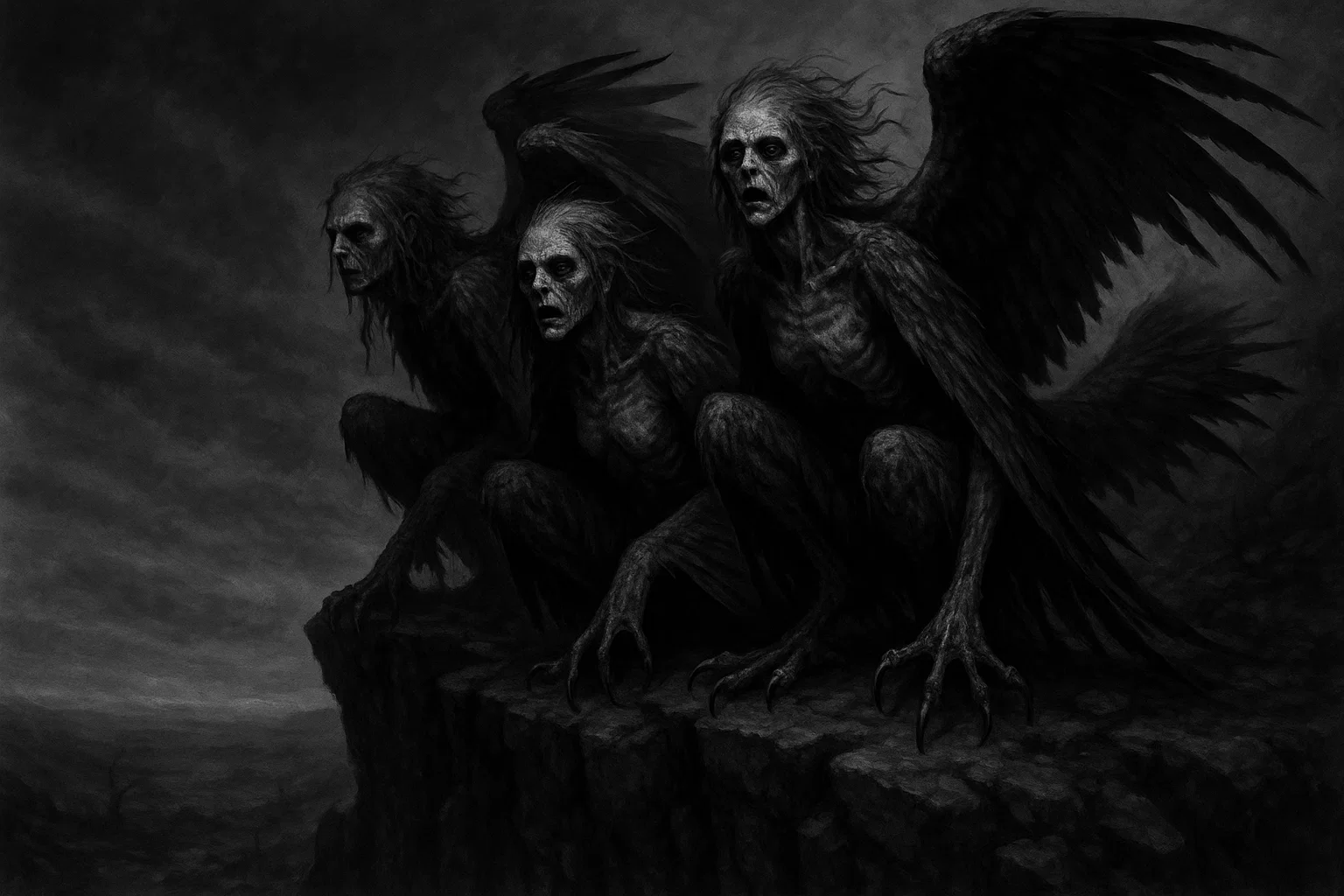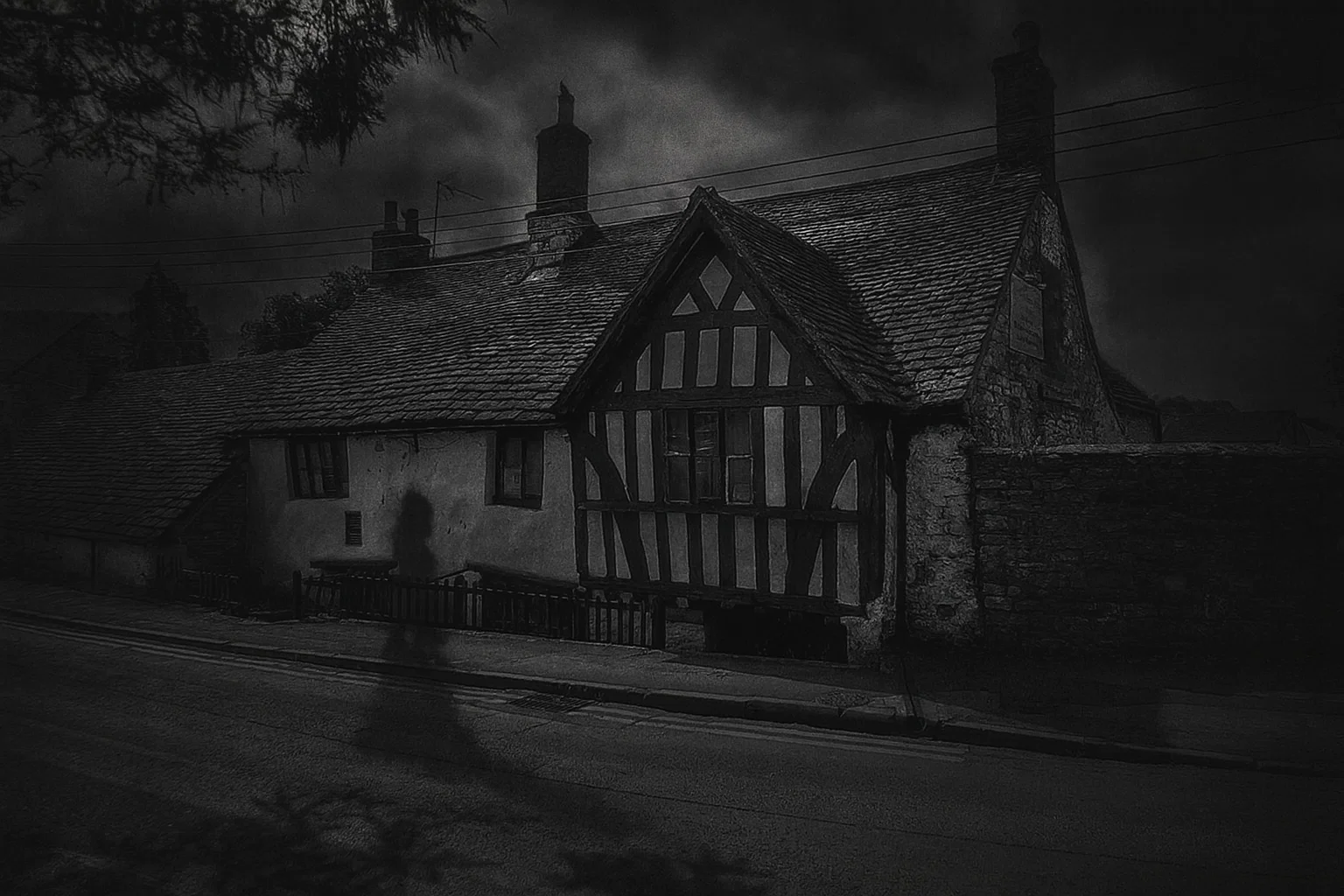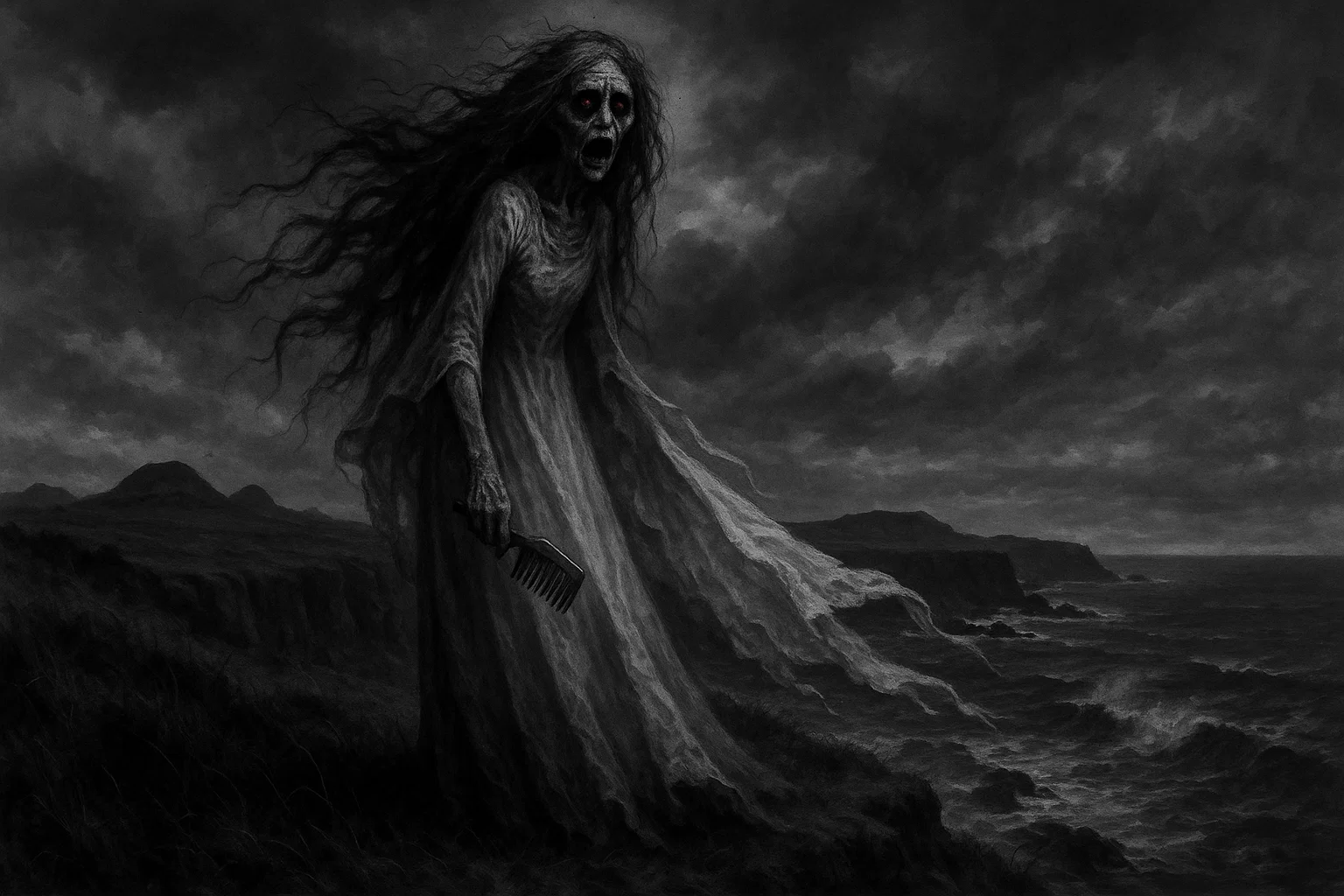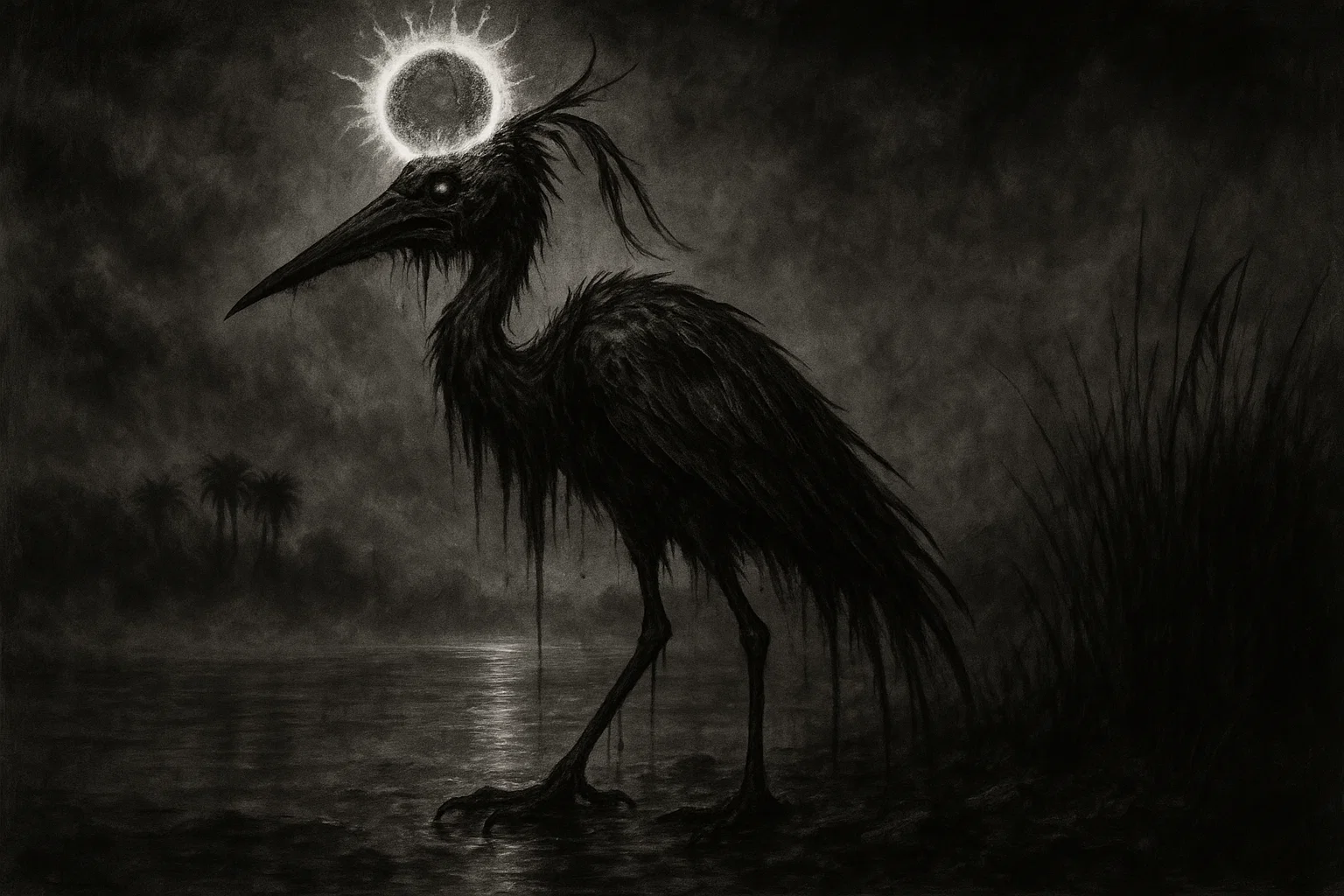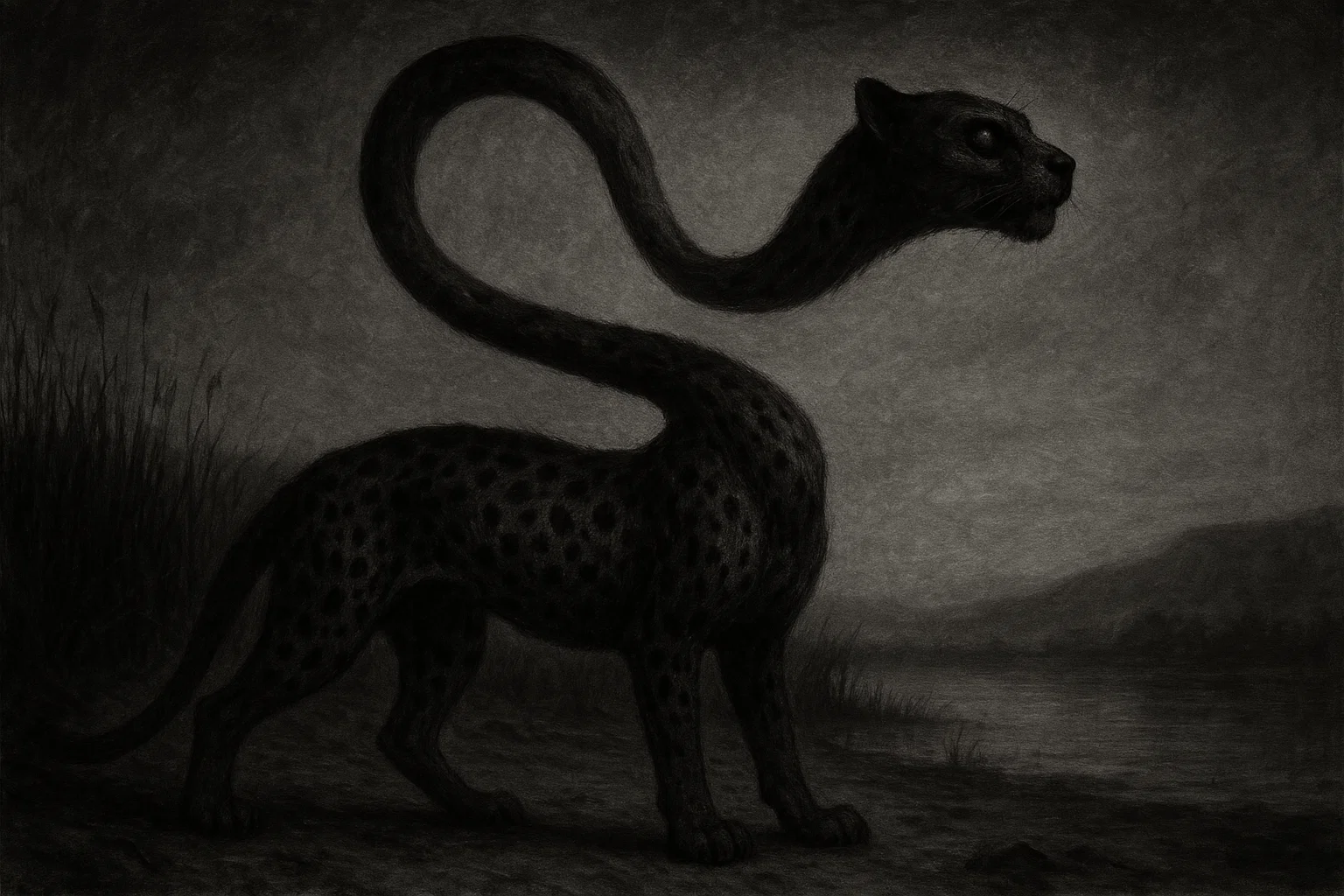In Greek mythology, the Harpy is a personification of storm winds and an agent of divine punishment. These creatures appear as half-human, half-bird beings, sent by Zeus to seize individuals or objects and deliver retribution for offenses against the gods.
Early accounts portray them as swift and neutral forces. However, later traditions focus more on their role in tormenting specific figures (such as the seer Phineus) by stealing food and leaving foul residues.
Summary
Key Takeaways
| Attribute | Details |
|---|---|
| Names | Harpy, Harpyiai; from Greek ἅρπυια (hárpyia), meaning “snatcher” or “swift robber”; variants include Aello (“storm swift”), Ocypete (“swift wing”), Celaeno (“the dark”), Podarge (“fleet-foot”). |
| Nature | Supernatural wind spirits and daimones, functioning as enforcers of Zeus’s will. |
| Species | Hybrid: avian-humanoid. |
| Appearance | Winged women with bird bodies, long claws, pale hunger-marked faces; early depictions as lovely-haired maidens, later as foul and haggard. |
| Area | Greece, Thrace, Strophades Islands, entrances to the underworld. |
| Creation | Born to sea god Thaumas and Oceanid Electra; alternate parentage from Typhon or Poseidon. |
| Weaknesses | Vulnerable to superior winds from Boreads; repelled by divine intervention or brass instruments in some accounts. |
| First Known | 8th century BCE, Homer’s Iliad and Odyssey. |
| Myth Origin | Greek elemental and punitive folklore, tied to storm phenomena and divine retribution. |
| Strengths | Supernatural flight speed, storm summoning, prophecy in select cases. |
| Diet | Snatch food from victims, leaving inedible remnants; associated with hunger infliction. |
| Associated Creatures | Sisters to Iris (rainbow goddess); linked to Erinyes, Sirens, Gorgons as hybrid punishers. |
Who or What Is Harpy?
The Harpy is a class of mythical monsters in Greek lore. They are classified as wind daimones with hybrid forms combining human and avian elements.
According to the earliest myths, Harpies were neutral storm-bringers who abducted people or objects at the command of higher deities, particularly Zeus. This role positions them as intermediaries between the mortal realm and the divine, often invoked to explain unexplained disappearances or destructive weather events.
In core narratives, Harpies execute targeted punishments. One great example is when they deprived the seer Phineus of food and water.
Their presence extends to underworld guardianship, where they prevent escapes or escort souls, aligning them with chthonic forces. Unlike more autonomous monsters, Harpies operate strictly under directives from gods, embodying the impersonal nature of retribution rather than personal malice.
Why Do So Many Successful People Secretly Wear a Little Blue Eye?
Limited time offer: 28% OFF. For thousands of years, the Turkish Evil Eye has quietly guarded wearers from the unseen effects of jealousy and malice. This authentic blue glass amulet on a soft leather cord is the real thing – beautiful, powerful, and ready for you.
Genealogy
Genealogically, they descend from Thaumas and Electra, linking them to oceanic and atmospheric domains. This parentage reinforces their elemental ties as siblings to Iris, the messenger goddess.
| Relation | Details |
|---|---|
| Parents | Thaumas (sea god, son of Pontus and Gaia) and Electra (Oceanid nymph, daughter of Oceanus and Tethys) |
| Grandparents (Paternal) | Pontus (primeval sea) and Gaia (Earth) |
| Grandparents (Maternal) | Oceanus (Titan of the encircling river) and Tethys (Titaness of fresh water) |
| Siblings | Iris (goddess of the rainbow and divine messenger) |
| Alternate Parentage | Typhon (storm giant) and Echidna (mother of monsters); or Poseidon (sea god) in rare variants |
| Offspring (Podarge only) | Xanthus and Balius (immortal horses of Achilles, sired by Zephyrus the West Wind) |
| Uncles/Aunts (Paternal) | Nereus, Phorcys, Ceto, Eurybia (children of Pontus and Gaia) |
| Uncles/Aunts (Maternal) | Oceanids (including Styx, Metis, Doris) and river gods (children of Oceanus and Tethys) |
| Cousins | Nereids (sea nymphs), Gorgons, Graeae, Ladon (via Phorcys and Ceto); Achilles’ horses indirectly via divine gifting |
| Consort (Podarge only) | Zephyrus (Anemoi god of the West Wind) |
| Associated Deities | Zeus (commander of Harpies as agents of punishment); Iris (sister and mediator); Boreads (Zetes and Calais, pursuers and nephews via Boreas) |
| Extended Chthonic Ties | Erinyes (Furies; Harpies serve as escorts or parallels in underworld tasks) |
Etymology
The term Harpy derives from the Ancient Greek ἅρπυια (hárpyia), a feminine form of the verb ἁρπάζω (harpázō), meaning “to snatch” or “to seize.” This etymology directly reflects the creature’s primary mythological function: the rapid abduction of persons, souls, or possessions, often in service to Zeus.
Alternative derivations connect to ἀνερείπομαι (anereípomai), meaning “to rob” or “to plunder,” highlighting their role as swift thieves of the divine will. Scholars note that these origins may stem from folk etymologies, as the precise linguistic evolution remains debated.
Individual Harpy names further illuminate this semantic field. Hesiod identifies Aello, from ἀελλώ (aellṓ), denoting “storm wind” or “squall,” and Ocypete, combining ὠκύς (ōkús, “swift”) with πτερόν (pterón, “wing”), rendering “swift-winged.”
Virgil introduces another Harpy, Celaeno, from κελαινός (kelaínos), “dark” or “obscure,” suggesting an association with gloom or foreboding, possibly alluding to their role in eclipses or shadowy torments.
Homer’s Podarge, meaning “fleet-footed” from ποδάργος (podárgos), highlights mobility, as this Harpy mates with Zephyrus to sire Achilles’ horses, blending speed with generative aspects.
Historical usage traces the term back to the Homeric epics of the 8th century BCE, where Harpies appear as abstract snatchers with little detail. By Hesiod’s Theogony (circa 700 BCE), the name solidifies in a genealogical context, linking it to Thaumas’s lineage and oceanic etymons.
In Roman Latin, harpȳia retains the Greek form, appearing in Virgil’s Aeneid (1st century BCE) with amplified monstrous connotations.
Post-classical adaptations, such as in medieval heraldry, evolve “harpy” into Jungfrauenadler (“maiden eagle”), shifting focus to heraldic symbolism while preserving the snatching motif.
You May Also Like: 10 Short Horror Stories You Should Never Read Alone
What Does the Harpy Look Like?
Earliest depictions, as in Hesiod, portray them as lovely-haired maidens equipped with wings, emphasizing grace and speed over monstrosity.
These forms feature human upper bodies transitioning seamlessly into avian lower halves, with feathers covering the legs, which end in taloned feet suited for grasping. Homer aligns with this, naming Podarge as a swift-footed entity without grotesque details, implying a lithe, wind-like silhouette.
By the 5th century BCE, vase paintings introduce more hybrid traits: women’s faces atop bird torsos, wings arched for rapid flight, and elongated claws on hands and feet. These illustrations (such as those on Athenian pottery) show pale complexions marked by perpetual hunger, with disheveled hair and avian beaks occasionally replacing mouths.
Later Roman accounts—particularly Virgil—accentuate repulsiveness: haggard features, insatiable maws, and bodies resembling vultures, complete with hooked talons and bat-like wings.
Tomb friezes from Lycia (circa 500 BCE) depict them in gentle abduction scenes, carrying figures with tender grips, in contrast to the foul, stench-emitting forms in Apollonius Rhodius’s Argonautica.
Ever Walk Into a Room and Instantly Feel Something Watching You?
Millions have used burning sage to force out unwanted energies and ghosts. This concentrated White Sage & Palo Santo spray does the same job in seconds – just a few spritzes instantly lifts stagnation, breaks attachments, and restores peace most people feel immediately.
Mythology
The Harpy enters Greek mythological records as elemental daimones, with the earliest mentions in Homer’s Iliad (circa 8th century BCE), where Podarge appears as the mate of Zephyrus, birthing the immortal horses Xanthus and Balius for Achilles.
This brief reference frames Harpies as wind spirits rather than antagonists, their fleetness symbolizing uncontrolled velocity. The Odyssey expands this, portraying them as snatchers of the vanished—Odysseus fears they might carry him off like others lost to sudden gales—equating them to destructive storms that erase mortals without a trace.
Hesiod’s Theogony (circa 700 BCE) formalizes their genealogy, naming Aello and Ocypete as daughters of Thaumas and Electra, sisters to Iris. Here, they embody lovely, swift-winged maidens who traverse air currents, linking them to oceanic and atmospheric domains.
By the 5th century BCE, Aeschylus in The Suppliants alludes to them indirectly as winged punishers, aligning with emerging themes of retribution.
Apollonius Rhodius’s Argonautica (3rd century BCE) cements their punitive role in the Phineus episode, where Zeus dispatches them to torment the seer for prophetic abuses or for mistreatment of kin. They descend upon his meals, snatching portions and befouling remnants with stench, reducing him to skeletal hunger until the Boreads intervene.
You May Also Like: Strzyga: The Bloodthirsty Demon of Slavic Folklore
Legends
The Torment of Phineus by the Harpies
Zeus, the king of the gods, gave King Phineus of Thrace the gift of prophecy. However, Phineus misused this gift by sharing divine secrets and punishing his sons, Boreas and Clarus, for standing up against their cruel stepmother.
As punishment, Zeus sent the Harpies, fierce creatures with wings, to torment him. Whenever someone brought food to Phineus, the Harpies would swoop down, creating strong winds, grab the best parts of the meal, and devour some while tossing the rest back onto his table, making it smell terrible and impossible to eat.
As a result, Phineus became severely emaciated, with his once strong body wasting away. The awful smell drove everyone away, leaving him alone in his palace.
During a quest to find the Golden Fleece, a group of heroes called the Argonauts, led by Jason, came across Phineus. They found him weak and desperate on his throne. He told them about his suffering and asked for help from the winged brothers Zetes and Calais, who were also part of the Argonauts.
With swords in hand, the brothers chased after the Harpies as they came to steal food again.
The chase was intense, with Zetes and Calais almost matching the speed of the Harpies as they flew high above. The Harpies tried to escape to the Strophades Islands, but the brothers drew closer and attacked the creatures. Just then, Iris, the messenger of the gods, stepped in and told the Harpies to stop bothering Phineus, promising to spare them from death.
Grateful for their help, Phineus then shared important information about how to navigate past dangerous obstacles on their journey. After that, he was able to enjoy his meals in peace again.
The Abduction of Pandareus’s Daughters
King Pandareus of Miletus stole a prized golden hound made by the god Hephaestus from Zeus’s temple in Crete. This act angered Zeus, who punished Pandareus by killing him and his wife.
However, their two daughters, Cleodora and Merope, were spared as they were still babies. The goddesses of Olympus took pity on the sisters: Hera raised them with wisdom, Aphrodite provided them with honey and milk, Artemis gifted them with hunting skills, and Athena taught them how to weave.
As the sisters grew into beautiful young women, they wanted to marry. They sought the favor of Zeus, who promised to find them divine husbands if they completed certain rituals at Hera’s altar.
Just before they were to perform these rituals, the Harpies—mysterious and swift creatures—showed up. They either acted on their own or were inspired by the gods to do so.
In a flash, the Harpies seized Cleodora and Merope. They took them to the underworld, where they became servants to the Erinyes, who were goddesses of vengeance.
In the underworld, the sisters spent their days tending to these avenging spirits, performing tasks like grinding flour and making offerings, forever trapped in this grim existence.
This abduction explains why the beautiful sisters disappeared from stories about mortals. Some versions of the tale suggest that the Harpies may have delivered them to different places, like the Strophades or caves in Crete.
You May Also Like: Zmeya: The Multi-Headed Dragon of Slavic Nightmares
The Harpies’ Encounter with Aeneas and the Trojans
After the fall of Troy, Aeneas and his group of followers fled westward and arrived at the Strophades Islands. These islands were known to be haunted by mythical creatures called Harpies.
Tired and hungry, the Trojans killed some cattle and goats to prepare a big feast, complete with roasted meat and wine to offer to the gods. Just as they were about to enjoy their meal, the sky suddenly filled with the sound of wings. The Harpies, led by their queen Celaeno, swooped down on their banquet.
Their taloned hands tore limbs from spits, their hooked beaks ripped flesh, and they devoured voraciously, leaving bones picked clean and tables smeared with filth. The stench overwhelmed the men, who fled in disgust, weapons drawn against the shrieking horde.
The creatures pulled back to the rocky cliffs, but Celaeno, one of the Harpies, flew high above. With a voice that roared like a fierce wind, she warned the Trojans, “What do you want here, sons of Laomedon, preparing to fight against us, the messengers of the gods? Leave this shore; you may reach Italy, but you will suffer such hunger that you’ll end up gnawing on your own tables in despair.”
The Trojans, filled with fear, sought advice from the seer Helenus, who confirmed that Celaeno’s prophecy was true. Determined, they continued their journey and faced more challenges. When they finally reached Italy, Anchises suggested they eat the barley cakes they had been using as plates for their meager food.
As they ate these “tables,” their fortunes began to change for the better, proving Celaeno’s words true without any more curses.
Podarge and the Birth of Achilles’ Horses
In the meadows near the ocean, a magical creature named Podarge, who was part horse and part wind, grazed peacefully. One day, Zephyrus, the West Wind, noticed her and quickly swept closer, and together they created two extraordinary horses named Xanthus and Balius.
These horses were known for their incredible speed and had shiny coats that sparkled like stormy clouds. After giving birth, Podarge disappeared into the wind, leaving the colts to Poseidon, the god of the sea, who then gifted them to a hero named Peleus.
Peleus used these magnificent horses to pull his chariot during his wedding to Thetis, and they eventually became part of the life of their son, Achilles.
During the Trojan War, the horses were so sad at the death of Achilles’s close friend, Patroclus, that they cried golden tears. They even spoke, sharing omens about the future, thanks to their magical heritage.
One horse, Xanthus, warned Achilles about his own upcoming fate, but had to stop speaking when the goddess Hera commanded it.
You May Also Like: Fafnir the Lindworm: Poison-Breathing Dragon of Norse Sagas
Harpy vs Other Monsters
| Monster Name | Origin | Key Traits | Weaknesses |
|---|---|---|---|
| Siren | Greek | Seductive song lures sailors; bird-women hybrids | Wax-sealed ears; tied restraint |
| Sphinx | Greek/Theban | Lion body, woman head; riddles travelers | Unsolved riddles lead to self-destruction |
| Gorgon | Greek | Snake-haired women petrify with gaze | Decapitation; reflective shields |
| Erinys (Fury) | Greek | Winged avengers of blood crimes; serpentine | Appeasement rituals; divine pardon |
| Lamia | Greek/Libyan | Child-devouring serpent-woman; shape-shifter | Magical herbs; prophetic sight |
| Empusa | Greek | Shape-shifting demoness; bronze leg, flame foot | Iron weapons; exposure at dawn |
| Scylla | Greek | Multi-headed sea monster; devours sailors | Heroic intervention; divine transformation |
| Chimera | Greek/Lycian | Lion-goat-serpent hybrid; fire-breathing | Lanced vulnerabilities; Bellerophon’s mount |
| Alkonost | Slavic | Bird-woman with enchanting song; joy-bringer | None specified; tied to paradise |
| Furie | Roman | Vengeful winged women; pursue oath-breakers | Legal expiation; temple offerings |
| Strix | Roman | Owl-like blood-drinker; nocturnal shapeshifter | Magical bindings; daylight exposure |
Harpies share hybrid avian-human forms and punitive roles with creatures like Sirens and Gorgons, all embodying feminine peril in Greek lore—Sirens through charm, Harpies through theft, Gorgons via petrification.
However, some differences appear in agency: Harpies act as Zeus’s hounds, lacking the autonomy of riddle-posing Sphinxes or blood-avenging Erinyes.
Compared to shapeshifting Lamias or flame-footed Empusae, Harpies prioritize wind-speed over seduction or devouring.
Roman counterparts (Strixes) amplify nocturnal hunger, while Slavic Alkonosts invert to benevolent song.
Powers and Abilities
The Harpy possesses abilities centered on aerial dominance and punitive execution, derived from their wind-spirit essence.
They summon gusts to disorient victims, facilitating swift abductions that leave no trace, as seen in their seizure of Pandareus’s daughters. Foul exhalations render food toxic, enforcing starvation as in Phineus’s torment. At the same time, prophetic insight, notably Celaeno’s, foretells fates like Aeneas’s famine.
Their powers and abilities include:
- Storm Summoning: Generate sudden gales or whirlwinds to approach or escape, personifying destructive weather.
- Rapid Flight: Attain wind-equaling speeds, enabling long-distance pursuits or abductions across skies and seas.
- Snatching Claws: Use taloned hands and feet to seize food, objects, or persons, carrying them to remote locales or the underworld.
- Fetid Emission: Exhale or deposit a stench that contaminates meals, inducing nausea and preventing consumption.
- Prophecy: Select individuals, such as Celaeno, deliver accurate omens or curses that influence future events.
- Underworld Guardianship: Ward the gates of Hades, preventing unauthorized passage or escorting souls.
You May Also Like: Huldra: The Beautiful Forest Demon of Scandinavia
Can You Defeat a Harpy?
To defeat a Harpy, you need to take advantage of its weaknesses, especially since they are fast and dangerous in direct fights.
For example, in the myth involving Phineus, two brothers, Zetes and Calais, chased the Harpies through the air, using their speed to almost catch them. However, the goddess Iris intervened and made them promise to stop chasing. This shows that having powerful allies, especially those with divine connections, is the best way to deal with Harpies.
Later stories mention using loud brass instruments to scare the Harpies away. The noise they make sounds like strong winds, which can scatter the Harpies during an attack. Seeking help from the gods also seems to work; Phineus was saved when he asked the Argonauts for assistance, who in turn invoked the power of Zeus to limit the Harpies’ actions.
There isn’t one specific weapon that can destroy a Harpy, because they are tied to the elements and are essentially immortal. However, using rituals or redirecting the wind can effectively send them away.
Conclusion
Harpies are fascinating monsters in Greek mythology, representing the powerful forces of nature that can bring both justice and punishment.
Originally seen as ethereal creatures who would snatch away things and people, they have evolved into symbols of relentless punishment. You can find them in famous epic tales like the Argonautica and the Aeneid, which show how stories change over time while still preserving their essential messages.
Today, we still see traces of harpies in modern art and language, which turn ancient fears into enduring themes about the swift, unavoidable consequences.

